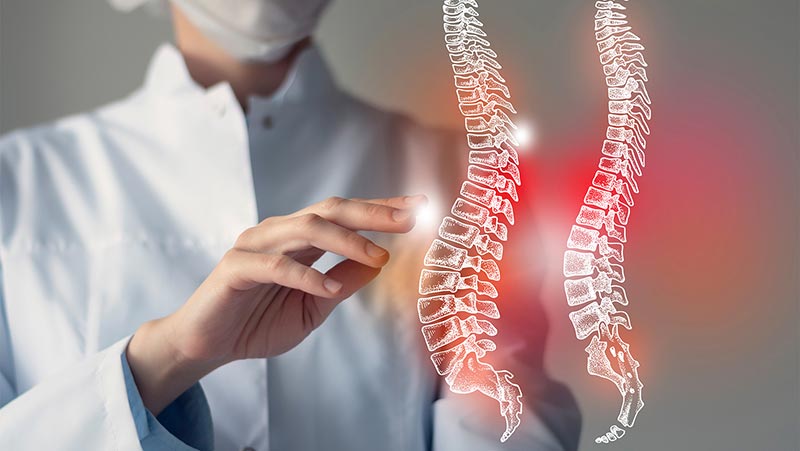At Atlantic Endocrinology & Diabetes Center in New York, we know that your autonomic nervous system is a part of your overall nervous system that controls the automatic functions of your body that you need to survive.
These are processes you don’t think about and that your brain manages while you’re awake or asleep.
At Atlantic Endocrinology & Diabetes Center we all know the importance of our brain, but did you also realize that without an efficient autonomic nervous system to maintain homeostasis in body functions such as heart rate and blood pressure; everything from digestion to temperature regulation would be impaired.
Our mental processes rely on this intricate monitoring network for their very survival!
What is the Autonomic Nervous System?
The autonomic nervous system controls all the automatic functions of the body, from breathing to heart rate.
It’s a complex network of neural pathways that can be classified into two parts: the sympathetic and parasympathetic nervous systems.
The sympathetic nervous system is responsible for the “fight or flight” response. It ramps up the body’s energy levels and prepares it for action.
The parasympathetic nervous system is the “rest and digest” response. It slows down the heart rate and relaxes the body.
Both systems work together to maintain a stable balance in the body. When one system is activated, the other system counteracts it. This allows the body to respond to stressors quickly and efficiently.
The autonomic nervous system is a vital part of health and well-being. It helps the body respond to stress and maintain balance in the face of change. Knowing how it works can help you better understand your own body and take steps to improve your health.

Where does the autonomic nervous system fit in the overall structure of the nervous system?
Your overall nervous system includes two main subsystems:
- Central nervous system: This includes your brain and spinal cord.
- Peripheral nervous system: This includes every part of your nervous system that isn’t your brain and spinal cord.
Your peripheral nervous system also has two subsystems:
- Somatic nervous system: This includes muscles you can control, plus all the nerves throughout your body that carry information from your senses.
That sensory information includes sound, smell, taste and touch. Vision doesn’t fall under this because the parts of your eyes that manage your sight are part of your brain.
- Autonomic nervous system: This is the part of your nervous system that connects your brain to most of your internal organs.
Your autonomic nervous system breaks down into three divisions, each with its own job:
- Parasympathetic Nervous System
- Sympathetic Nervous System
- Enteric nervous system
- Parasympathetic nervous system: This part of your autonomic nervous system does the opposite of your sympathetic nervous system. This system is responsible for the “rest-and-digest” body processes.
- Sympathetic nervous system: This system activates body processes that help you in times of need, especially times of stress or danger. This system is responsible for your body’s “fight-or-flight” response.
- Enteric nervous system: This part of your autonomic nervous system manages how your body digests food.
How does the autonomic nervous system help with other organs?
Much like a home needs electrical wiring to control lights and everything inside that needs power, your brain needs the autonomic nervous system’s network of nerves.
These nerves are the physical connections your brain needs to control almost all of your major internal organs.
Where is it located?
Your autonomic nervous system includes a network of nerves that extend throughout your head and body.
Some of those nerves extend directly out from your brain, while others extend out from your spinal cord, which relays signals from your brain into those nerves.
There are 12 cranial nerves, which use Roman numerals to set them apart, and your autonomic nervous system has nerve fibers in four of them.
These include the third, seventh, ninth and 10th cranial nerves. They manage pupil dilation, eye focusing, tears, nasal mucus, saliva and organs in your chest and belly.
Your autonomic nervous system also uses most of the 31 spinal nerves. These include spinal nerves in your thoracic (chest and upper back), lumbar (lower back) and sacral (tailbone).
The spinal nerve connections are how your autonomic system controls the following:
- Heart.
- Lungs.
- Liver.
- Pancreas.
- Spleen.
- Stomach.
- Small and large intestine.
- Colon.
- Kidney.
- Bladder.
- Sexual organs.
The part of your brain that runs autonomic functions is your hypothalamus. This structure isn’t part of your autonomic nervous system, but is a key part of how it works.
CONCLUSION
The nervous system is an incredibly complex network of neural pathways that can be classified into two parts: the sympathetic and parasympathetic nervous systems.
The first deals with our automatic functions like breathing, digestion, heart rate etc. while the latter controls things like arousal and emotional reactions to stimuli.
As you may have guessed by now, these systems work together in order to keep us functioning properly.